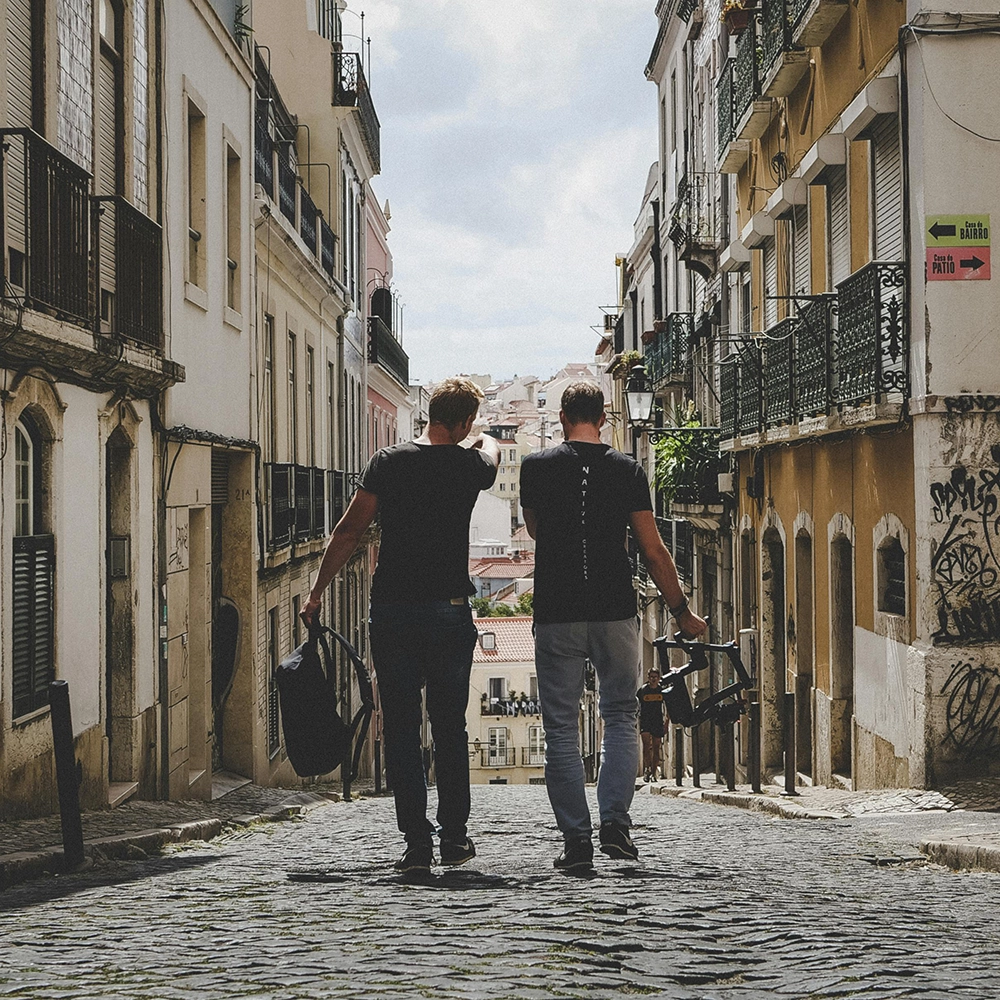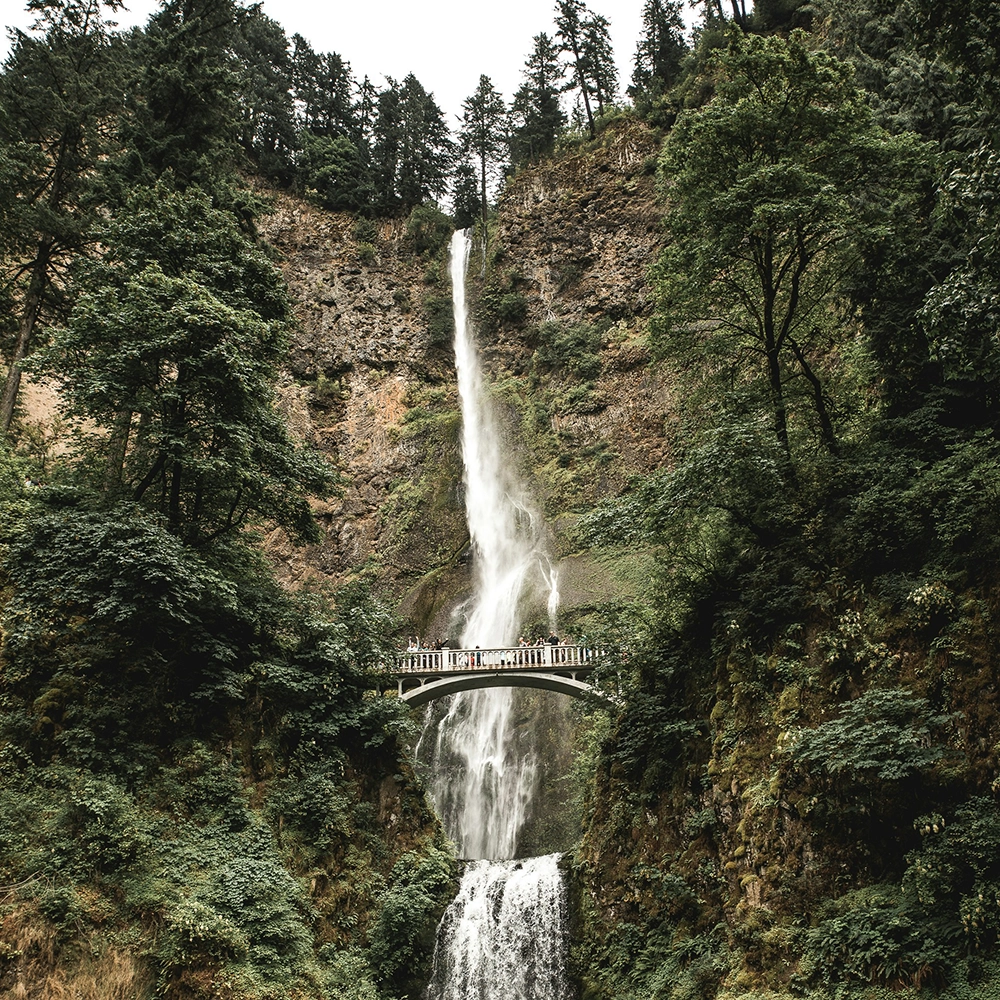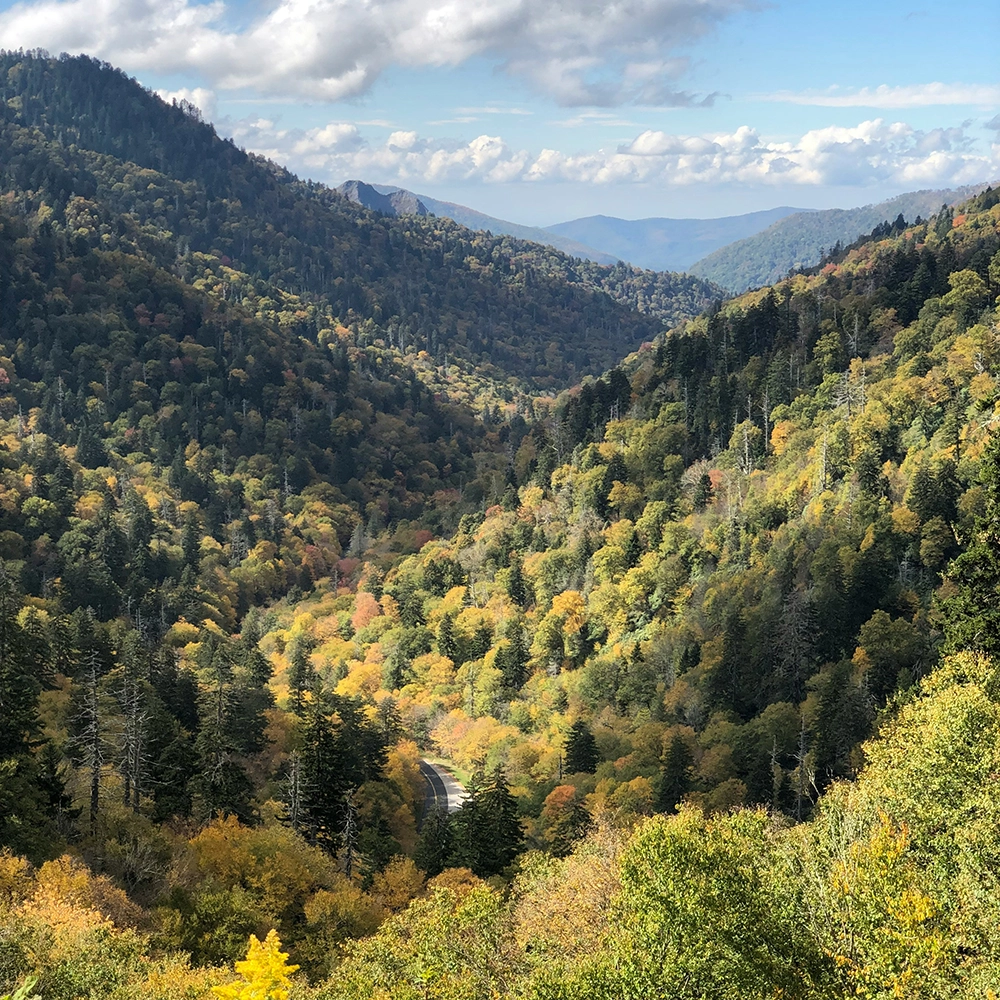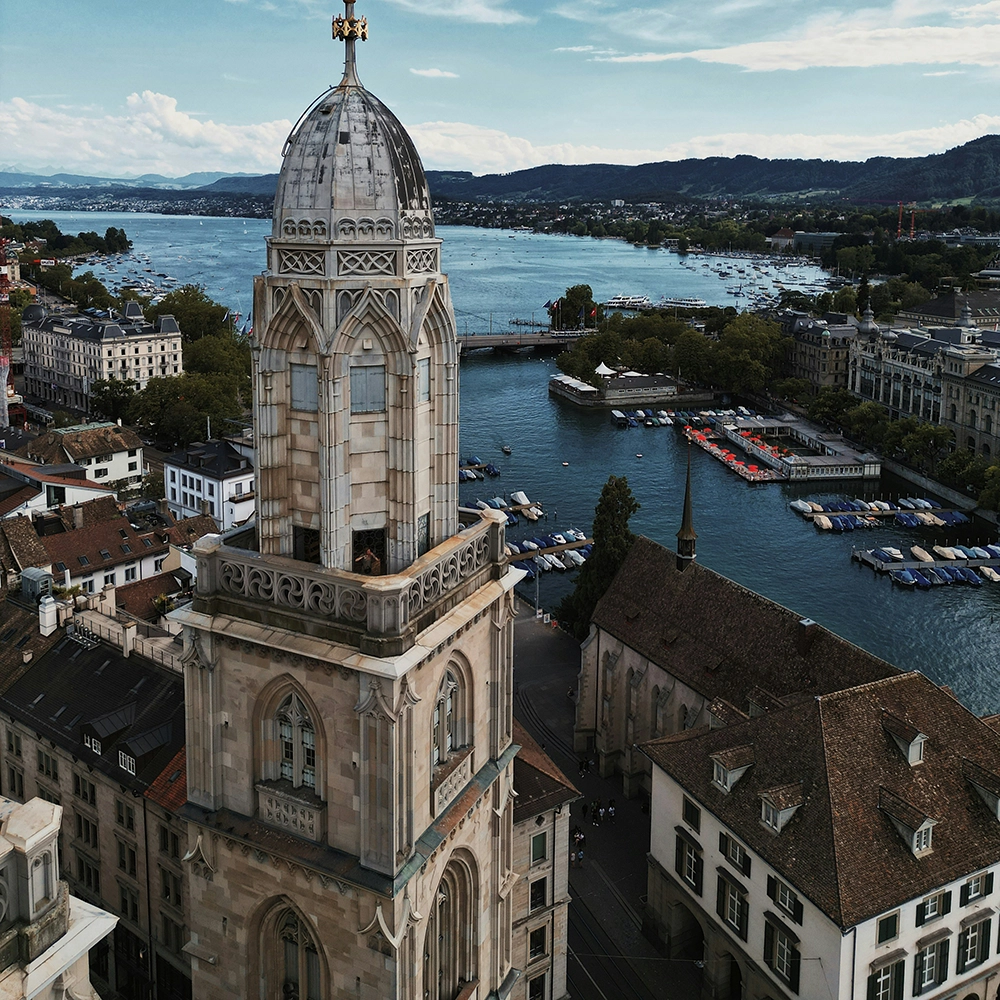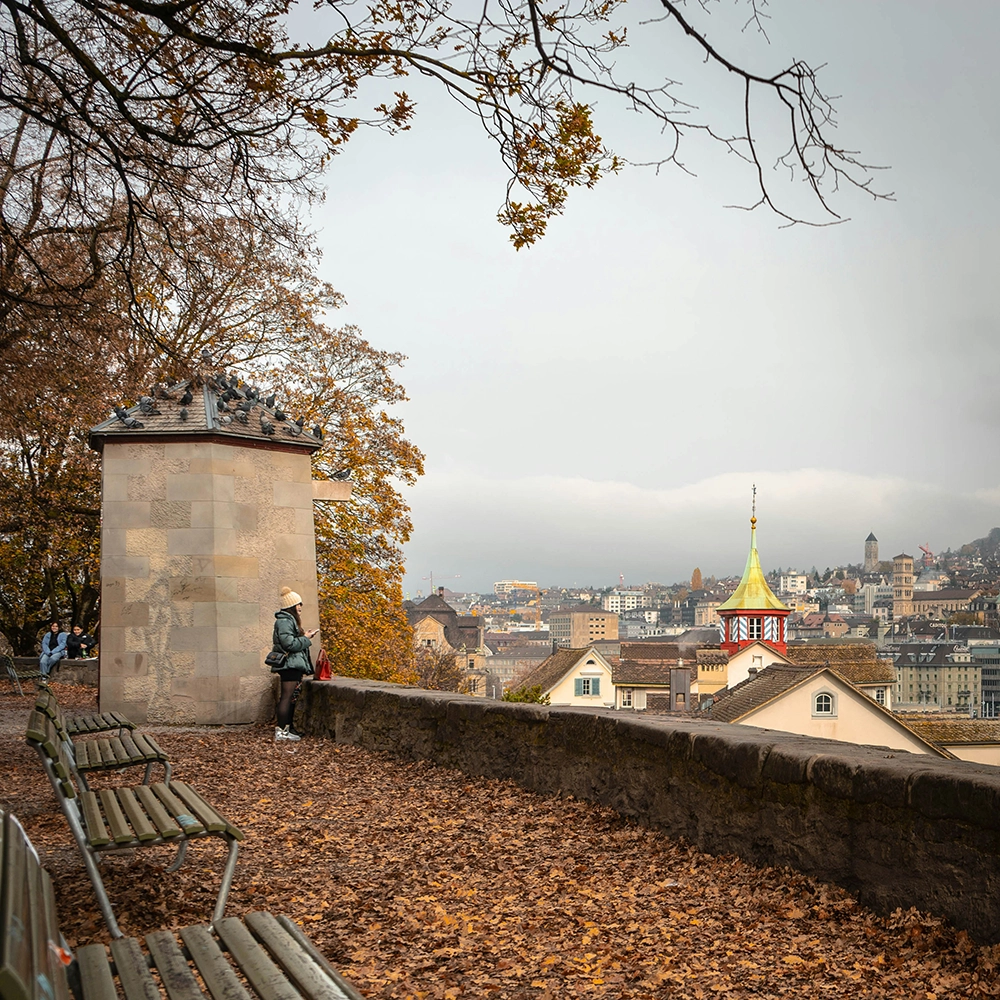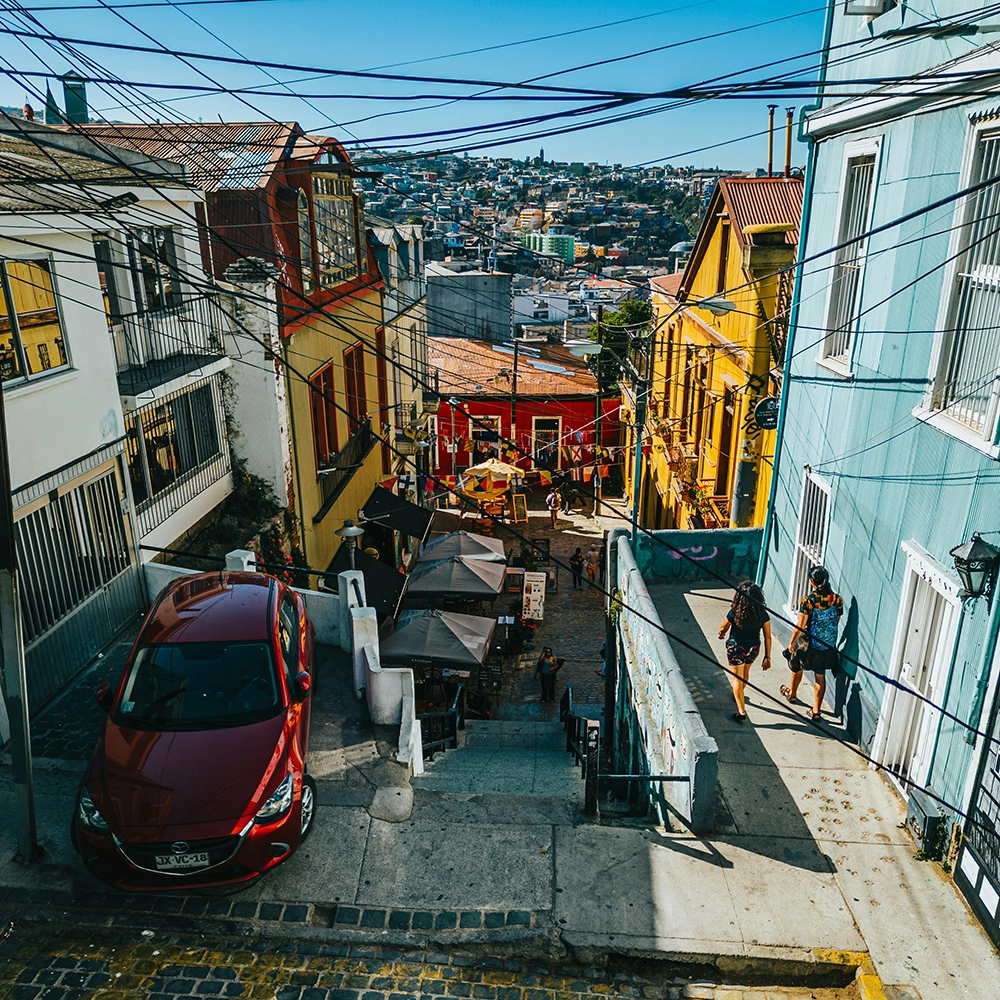Daytona Beach during spring break. New York City at Christmas. Munich for Oktoberfest.
These are all epic travel experiences, but they’re also an introvert’s worst nightmare. While each of these events might have a draw, even to the most reserved traveler, the idea of spending hours or even days crammed in with countless strangers is enough to send us running for the hills.
The good news for introverts (and the extroverts that travel with them) is that there are still so many incredible destinations that offer adventure for all.
What Do Introverts Do on Vacation?
We can do plenty on vacation. Because we are less likely to throw ourselves into situations like our extroverted counterparts, it just takes a bit more planning and thoughtfulness.
Can an introvert travel alone?
Many introverts prefer traveling alone. The idea of being in close quarters with others in a car during a road trip or at a hotel feels like a lot of pressure.
It’s important to remember that being introverted is not the same as being shy or anti-social. Those characteristics might go hand-in-hand, but often introverts enjoy spending time with other people. They just rather have that quality time on different terms, either one-on-one or in small groups, or in measured doses rather than all the time.
This means that introverts are entirely capable of traveling on their own and handling themselves in social situations. It also means that introverts can travel with other people or in groups if they choose.
It all comes down to striking the right balance for that individual.
Can an introvert enjoy a group tour?
This is also a resounding yes. Because group interactions tend to use up a lot of social energy for introverts, though, it’s a good idea to head into the trip with a few strategies for managing your experience.
Get tips like focusing on the right kinds of activities, whether to pay the single supplement fee, and more in our travel guide for introverts.
Do introverts like the outdoors?
It’s not universal, but yes, many introverts enjoy time in nature. It gives us the space to reflect. It tends to be less crowded, and so we don’t feel as overwhelmed by uncontrollable social interactions. It’s a public space where being on your own is socially acceptable.
If you’re considering an outdoor adventure trip, remember a few safety guidelines.
First, know your limits and the risks of being in the outdoors. This is especially important if you’re traveling solo. While being alone isn’t inherently more dangerous, if something does happen, it’s almost entirely up to you to fix it. Not having a safety net in the form of other people can make activities riskier.
A twisted ankle on the trail, getting lost, or running out of water can all have life-threatening consequences. You need to know how you — and you alone — will handle those types of situations.
Second, recognize where your line is between being alone and being lonely. It’s often easier to find solitude in nature, but because there are fewer people just milling about, it can be more difficult to find social connection when you need it. This can lead to feeling more isolated and lonelier than you intended.
Have strategies in mind for how you will manage your emotional health when you start to feel overwhelmed, one way or the other.
Travel ideas for introverts
- Visit a state or national park.
- Go on a solo safari.
- Sign up for a wellness retreat.
- Take a train trip where the journey is the destination (book a private sleeper bunk so you have somewhere private to recharge your social batteries).
- Voluntour abroad.
- Consider a cruise on a boutique ship instead of an ocean liner.
- Book a cabin for a reading or crafting retreat with a couple of friends.
Best Destinations for Introverts
1. Portland, Oregon, USA
- Pros: A large city with many neighborhoods that give it a smaller feel, lots of independent stores and restaurants that give more personal attention when you’re ready for connection, loads of parks and nature nearby when you’re ready to escape
- Cons: It’s very spread out, so while public transportation is good by American standards, you’ll want a car for more expansive exploring; big beer culture could be tough for sober/sober-curious travelers
- When to go: Late fall/early winter for fewest crowds; summer is popular for outdoor enthusiasts and outdoor dining, both of which Portland does really well
- What to do: Food trucks, Columbia River Gorge National Scenic Area, Powell’s City of Books
I’ve traveled to Portland several times to visit family, and each trip had a balance of togetherness and alone time. This is a city of variety, so you shouldn’t have any trouble finding whatever you need.
On a recent trip (in October), I made my traditional stop at Powell’s City of Books. A massive store with used and new books, you’ll be able to spend hours perusing the shelves at your leisure.
Powell’s main store downtown can get crowded, especially at Christmas shopping time or when people are escaping the rain. Either go at an off-peak time or try one of the smaller locations. The selection isn’t as robust, but they have the same quirky vibe that’s become synonymous with Portland.
When it’s time to eat, visit one of the city’s many food truck. You’ll find groups of them parked semi-permanently, often near breweries so you can grab a bite and a drink. Many of these groups have picnic tables to eat community-style. Join the fun or grab a seat off to the side for a low-key, unique dinner.
Portland is known for having tons of parks. Washington Park, near the Oregon Zoo, has plenty of trails that give you that out-of-the-way feeling without having to trek into the wilderness.
Alternatively, drive about an hour to the Columbia River Gorge National Scenic Area. Multnomah Falls gets all the glory — and for good reason since it’s incredibly beautiful — but it’s also worth short stops at Vista House at Crown Point and Portland Women’s Forum State Scenic Viewpoint nearby during your drive, too. You’ll find gorgeous (no pun intended) views without being surrounded by other people.
2. Tubac, Arizona
- Pros: Plenty to do despite its small community feel, close to larger cities for when you need variety
- Cons: Can feel isolating during longer trips unless you actively plan to stretch yourself socially
- When to go: Anytime if your main goal is to avoid crowds; try spring and fall for milder (AKA not scorching hot) weather, but expect more congestion in nearby Tucson and Phoenix
- What to do: Take a one-day watercolor class at the Tubac Center of the Arts, go birdwatching along the Santa Cruz River, window shop (or buy a souvenir) at the art galleries
We’ll forgive you if you haven’t heard of Tubac. It’s a small town in southern Arizona with a population of just over 1,000 people.
USA Today named Tubac the Best Small Town Arts scene three consecutive years (2001-2003). You’ll find galleries and shops with everything from paintings and photography to pottery and sculpture.
The Tubac Center of the Arts is open to the public and free to visit. In addition to its galleries and sculpture garden, the center hosts workshops, including some that are one or two days. This might be perfect when you want a low-pressure activity that also lets you pursue a special interest during a short stay.
Tubac has also been designated an International Dark Sky Community and sits along a main bird migration route. Pair those with the Anza Trail, an eight-mile hike/bike trail between the Presidio State Historic Park and Tumacácori National Historical Park, and you can get your fix of outdoor adventure.
If Tubac starts to feel too small, though, you’re only about an hour’s drive away from Tucson and less than three hours from Phoenix. It’s more than doable to make Tuscon your home base and escape to Tubac for a day to recharge or vice versa.
“It’s near enough to Tuscon that the non-introvert with you could find plenty to relieve boredom,” says seasoned traveler Martha. (Full disclosure: She’s the author’s mom, but she spent more than four decades balancing her slower pace with my dad’s more active streak, so she might know a thing or two.)
3. Great Smoky Mountains National Park, North Carolina/Tennessee, USA
- Pros: Rich in nature with a good mix of solitude and social interaction opportunity, nearby towns full of activity
- Cons: One of the most heavily visited U.S. national parks, many of the park’s highlights can be very crowded, observe the usual safety precautions if hiking solo
- When to go: March-April (although it can still be cold) or September; June-August is peak season, October weekends are busy with leaf peepers, and Easter weekend gets crowded, especially around Gatlinburg
- What to do: Attend a Ranger Program, hike to Chasteen Creek Cascade, drive the 11-mile Cades Cove Loop Road
National parks, or any green space really, can be ideal for solitude. A lot of people find that they can truly be themselves in nature. And when they hike or camp on their own, it’s like they’re tapping into their most authentic selves. There’s no one else to cater to or balance with.
All of that can be true. It’s also true, though, that too much time in the solitude of nature can drive some of us crazy and make us feel exceptionally lonely, especially if we travel solo. That’s why The Great Smoky Mountains National Park is one of my favorites for introverts.
There are more than 500,000 acres of parkland, full of forest, wildflower meadows, animal life, and cultural history. Choose from hiking trails to scenic drive routes, tent camping to cabins, and high-energy adventure to relaxation. It shouldn’t be too hard to find open space to breathe.
Cades Cove, Kuwohi (formerly Clingmans Dome before returning to its Cherokee name), and Newfound Gap Overlook are among the most popular stops in the Smokies. They’re well worth the trip, but if you’re looking to steer clear of people, time your visit for the off-season.
Alternatively, check out the Cosby Area. It’s one of the less-visited corners of the park, even with its campground and trails.
Despite the Smokies’ expansiveness (or maybe because of it), it is one of the most accessible parks in the country and draws more visitors than nearly any other park.
Within an hour, you can be in one of the two major gateway cities, Pigeon Forge or Gatlinburg, Tennessee, both of which are packed with hotels, restaurants, and shops.
Bryson City, North Carolina, is another park entry point to the south. Compared to the other cities, Martha says it’s a “cute little town but definitely on the ‘slow’ side,” which might be more your speed.
All this proximity to town means that when your social battery is filled from time in the woods, you don’t have to go far or work too hard to get people time, too. And compared to some other, more remote national parks, that’s a good thing.
If staying in these towns still feels too peopley, book a cabin in the park. You’ll find better solitude and can better control how you spend your energy.
4. Edinburgh, Scotland
- Pros: Cafes that are good for people watching and being part of the action without having to dive all-in, people are friendly without being overbearing, good hub of transportation for exploring beyond the city proper
- Cons: The times with the fewest crowds tend to also be when the weather is unpredictable and rainiest
- When to go: May-June brings the best of summer with long hours of daylight, dry weather, and beating the peak-season rush; winter sees the fewest tourists and has some unique seasonal events, but it’s also cold, wet, and dark much of the time
- What to do: National Museum of Scotland, Palace of Holyroodhouse, group daytrip to Highlands, tour Castle of Edinburgh, hike Arthur’s Seat
On my first trip to Scotland, I intentionally did not plan many days in Edinburgh “because it’s a big city and I don’t like big cities.” When I left, I wished I’d had more time there.
Despite being the capital of Scotland, Edinburgh doesn’t have to feel overwhelming to introverts. Plan a visit to the National Museum of Scotland, which has enough rooms that you never have to feel like you’re constantly bumping into other people.
Holyroodhouse, the official royal residence in Scotland, has a short tour of the interior. The grounds offer more room to roam in the Palace Garden and Holyrood Abbey. You can do a self-guided audio tour or join a small group.
If you’re looking for some time outdoors, hike to the top of Arthur’s Seat, one of many hills throughout Edinburgh. There’s a dirt path that winds round the ancient volcano, so you shouldn’t get lost. You’ll be joined by joggers and dog walkers, so while it won’t be crowded (if you time it right), there are still people around to give you a smile and a nod as you pass.
When you’ve had enough of Edinburgh proper, book a small group tour to the Highlands. Several tour companies offer day trips to visit the region’s iconic castles and lochs. It’s an ideal way to get measured doses of social time and be able to visit some more remote areas that you’d otherwise miss if you’re relying on public transportation.
5. Zürich, Switzerland
- Pros: Safe, people can seem indifferent but are helpful when asked (basically, they’re introverts), good hub for exploring beyond the city, excellent public transportation
- Cons: Expensive, can be difficult outside of Zürich proper if you don’t speak German or French, you will have to make the first move if you need help or want to connect with someone
- When to go: March-May tend to be less crowded with moderate temperatures; summer (June-September) and winter (December-February) tend to be peak travel seasons when people can enjoy the outdoors to the fullest
- What to do: Kunsthaus art museum, Universität Zürich Natural History Museum and Botanical Garden, churches (Fraumünster, Grossmünster, St. Peter’s), weekend trip to the Alps
I have an American friend who, a doctoral degree, a marriage, and multiple children ago, moved to Switzerland for her Ph.D. and never really came back. That’s great for me because now when I visit, I have a free place to stay and on-demand translators (even if they do happen to be 10 and five years old).
I’ve visited over summer breaks and at Christmas, each time finding something new that’s perfect for the solo and solitude-seeking traveler.
For how close it is to the Alps, I’ve always found Zürich a relatively walkable city. There are hills, but if you aren’t in a hurry, you can enjoy a slower pace as you meander from church to museum to lakeside food cart.
During each of my visits, I’ve gravitated toward Grossmünster, the church you’ll most commonly see on postcards and as representative of the skyline. If you climb to the top of the towers, you get a stunning view of the city and Lake Zürich.
It’s a short walk from Grossmünster to narrow streets filled with stores and restaurants. Most store employees speak English, and most restaurants have English-language menus if, like me, your German is shaky at best. If having to navigate a foreign language as an introvert makes you nervous, there are worse places to be than Zürich.
It’s unusual to find free things to do Switzerland. Your best bet is to check out the museums at the city’s universities. ETH has a small geology museum, called focusTerra (my friend, also named Becky, got that Ph.D. in geology from ETH). It focuses mainly on Swiss and Alpine geology.
“Two buildings down is the Uni Zürich Natural History Museum with dinosaurs and fossils, and it’s also free,” says Becky. “Both tend to be sparsely attended, especially in nice weather. They’re good places to cool off or decompress.”
I can also vouch for the university’s free botanical garden, which I had entirely to myself on a rainy day.
Zürich has a great train system (and yes, the stereotype that the Swiss are always on time is true). When you’ve had enough of the city, you can get just about anywhere in Europe, including the Alps to ski, with great efficiency. Be prepared to transfer to a bus or two if you want to get into more rural areas or visit remote castles.
One of my favorite things about Switzerland at Christmastime is the holiday markets. Festivals in general tend to be different from anything in the U.S., so they’re something to consider when planning your trip.
However, Becky recommends avoiding Zürich during the Street Parade in August, describing it via WhatsApp as a “techno festival that is out of control, loud, drunk, everywhere.”
On the other hand, Sechseläuten in April might be on your list. It’s the pseudo-equivalent of Groundhog Day in the U.S., marking the end of winter.
“The guilds and their guests parade through the city, and they burn a giant snowman at the Sechseläutenplatz in front of the opera house,” Becky says. “This is actually fairly interesting, but if crowds and loud noises (fireworks are stuffed in the snowman) bother you, then maybe skip this day.
“Otherwise, I imagine Switzerland in general is good for introverts. The Swiss are a reserved bunch.”
6. Arequipa, Peru
- Pros: One of Peru’s largest cities, but doesn’t feel overwhelming with people; lots of community/public spaces where you can be with people without having to be the center of attention
- Cons: High altitude can take some getting used to, might need a guide or tour to help you find the best local gems
- When to go: December-March is the less-crowded rainy season (although with 300 days of annual sun, Arequipa sees less rain than other regions); Independence Day in late July can be busy but exciting with Arequipa throwing huge celebrations
- What to do: Order ocopa at a picantería; hike Misti Volcano; visit Juanita, the mummified Inca girl at Museo Santuarios Andinos; see the condors at Colca Canyon
I visited Arequipa years ago on a three-week tour of Peru’s highlights. As far as cities go, this was one of my favorites. Arequipa (population: 947,000) is Peru’s second-largest city, and a mere fraction of the size of Lima (population: 11 million).
Packed into the comparatively smaller footprint is a wealth of delicious food, history, and, just outside the city, natural wonders.
While you won’t be short of things to do, you can’t go wrong with picking out a bench on the Plaza de Armas and people watching. The plaza’s focal point is the Basilica Cathedral. From your vantage point, simply take in the view of everyday life surrounded by impressive white volcanic rock architecture.
National Geographic called Arequipa “Peru’s next great food city” and UNESCO named it a Creative City for Gastronomy, so you better get something to eat while you’re there.
For traditional Arequipeña cuisine, seek out a picantería. These typically female-owned restaurants are known for spicy dishes and stews made from family recipes. You’ll likely have to venture to the outskirts of town to find the best. It will be well worth the effort, though, especially if you’re in the mood for some local conversation around a communal table.
You might find it nice to stretch your legs in Arequipa (although beware of the high altitude). Although most hikers head to Machu Picchu for the Inca Trail, slightly less well-known and therefore less crowded is Colca Canyon nearby, about three hours from Arequipa.
There are overlooks you can drive to for views of the canyon — it's the second deepest in the world behind only China's Yarlung Zangbo Grand Canyon — or book a guided tour for a hike farther from the beaten path.
No matter how you get to Colca Canyon, look up. With any luck, you’ll see massive condors soaring overhead.
7. Valparaíso, Chile
- Pros: Colorful buildings and public murals make for a great “self-guided tour” if you want to wander the town on your own; just 90 minutes from Santiago, Valparaíso still has its own unique vibe
- Cons: It’s super hilly, so unless you have quads of steel, you’ll want to rely on transportation; some areas are gentrifying, and it is a city in transition
- When to go: September-October or March-May are the best times to avoid crowds, December-February (Chile’s summer) is better for beach bums if you can stand the extra people
- What to do: Take a funicular to Cerro Alegre or other hillside neighborhoods; tour La Sebastiana, one of Pablo Neruda’s houses; walk along the beach for a seaside view of hillside architecture; take a vineyard excursion
If Arequipa in Peru is the White City, then Valparaíso, Chile, is the Rainbow City (and not just because it’s an LGBTQ-friendly destination). One of the most visually interesting towns I’ve been to in South America, this coastal city features multicolored houses wedged into the hillsides.
Legend has it that the colorfulness is a product of using leftover paint from the city’s docks back in the 19th century to protect the homes from weathering. Today it’s a trademark of Valparaíso. It might even be what draws modern artists to the city.
You can’t really miss the rainbow view no matter where you are in Valparaíso. Head down to the beach, though, and you’ll get a panoramic shot that really showcases the higgledy-piggledy nature of the city’s layout.
Perched among the hillside is Pablo Neruda’s Valparaíso home, La Sebastiana. Neruda won the Nobel Prize for Literature in 1971. You can learn more about his life, poetry, and where these intersect with Chile’s larger history by visiting La Sebastiana, which is now a museum.
Take the funicular (acensor in Spanish) into the hills. There are several, and they’re relatively inexpensive. From there, you can explore different neighborhoods and their art and food. Valparaíso is a port city, so seafood should definitely be on the menu.
When you’re ready to get out of the city and if you’re interested in the region’s viniculture, take a tour at Concha y Toro vineyards. About 90 minutes away by bus, you’ll learn how they protect the vines, make and store the wine, and how Chile fits into the world’s wine industry.
Some of the tours can be large — as many as 25 people — but with portions of the experience taking place outside, you’ll have some elbow room. The samples are tasty and the tour entertaining enough that you might find that you don’t mind even the tighter cellar spaces.
Safe Travels for Introverts
Whether traveling solo or with others, in the U.S. or overseas, it’s important to be prepared. Use that analytical introvert brain to consider the risks of your trip, and then protect it with travel insurance.
Learn more about how Seven Corners can help you protect your money, health, and belongings or get a quick quote at SevenCorners.com.
